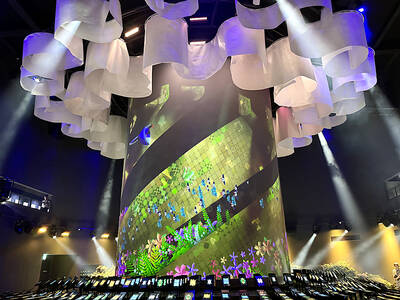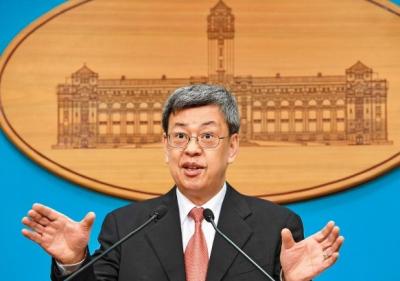Premier Jiang Yi-huah (江宜樺) reaffirmed the government’s target of increasing the rate of sewage drainage by 3 percent a year, as he urged officials to come up with measures to maintain the goal, Executive Yuan spokesperson Cheng Li-wun (鄭麗文) said yesterday.
Jiang issued the directive after Deputy Minister of the Interior Lin Tzu-ling (林慈玲) presented a briefing at a Cabinet meeting on a project to expand the sewage network.
According to the briefing, the proportion of households connected to the sewage system was 32.1 percent last year, an increase of 9.6 percent from 2009.
In terms of the percentage of the population served by waste water treatment plants, the ratio rose to 62.99 percent last year, from 48.66 percent in 2009, the briefing said.
The briefing showed that the government has achieved the 3 percent goal, as stated in President Ma Ying-jeou’s 2008 campaign platform, over the past four years.
Lin said that the government invested NT$162.5 billion (US$5.44 billion) over the past 16 years in increasing the number of households connected to the sewage system from about 3 percent in 1992 to about 20 percent in 2008, while an estimated NT$700 billion would be required to reach 100 percent coverage.
In a related development, Jiang instructed the Ministry of the Interior to study the possibility of reclaiming water from wastewater treatment plants and reusing the treated water as an alternative source in case of a water shortage, Cheng said.

PRAISE: Japanese visitor Takashi Kubota said the Taiwanese temple architecture images showcased in the AI Art Gallery were the most impressive displays he saw Taiwan does not have an official pavilion at the World Expo in Osaka, Japan, because of its diplomatic predicament, but the government-backed Tech World pavilion is drawing interest with its unique recreations of works by Taiwanese artists. The pavilion features an artificial intelligence (AI)-based art gallery showcasing works of famous Taiwanese artists from the Japanese colonial period using innovative technologies. Among its main simulated displays are Eastern gouache paintings by Chen Chin (陳進), Lin Yu-shan (林玉山) and Kuo Hsueh-hu (郭雪湖), who were the three young Taiwanese painters selected for the East Asian Painting exhibition in 1927. Gouache is a water-based

A magnitude 4.1 earthquake struck eastern Taiwan's Hualien County at 2:23pm today, according to the Central Weather Administration (CWA). The epicenter of the temblor was 5.4 kilometers northeast of Hualien County Hall, at a depth of 34.9 km, according to the CWA. The earthquake's intensity, which gauges the actual effect of a temblor, was the highest in Hualien County, where it measured 2 on Taiwan's 7-tier intensity scale. The quake also measured an intensity of 1 in Yilan county, Taichung, Nantou County, Changhua County and Yunlin County, the CWA said. There were no immediate reports of damage or injuries.

OFF-TARGET: More than 30,000 participants were expected to take part in the Games next month, but only 6,550 foreign and 19,400 Taiwanese athletes have registered Taipei city councilors yesterday blasted the organizers of next month’s World Masters Games over sudden timetable and venue changes, which they said have caused thousands of participants to back out of the international sporting event, among other organizational issues. They also cited visa delays and political interference by China as reasons many foreign athletes are requesting refunds for the event, to be held from May 17 to 30. Jointly organized by the Taipei and New Taipei City governments, the games have been rocked by numerous controversies since preparations began in 2020. Taipei City Councilor Lin Yen-feng (林延鳳) said yesterday that new measures by

President William Lai (賴清德) has appointed former vice president Chen Chien-jen (陳建仁) to attend the late Pope Francis’ funeral at the Vatican City on Saturday on his behalf, the Ministry of Foreign Affairs said today. The Holy See announced Francis’ funeral would take place on Saturday at 10am in St Peter’s Square. The ministry expressed condolences over Francis’ passing and said that Chen would represent Taiwan at the funeral and offer condolences in person. Taiwan and the Vatican have a long-standing and close diplomatic relationship, the ministry said. Both sides agreed to have Chen represent Taiwan at the funeral, given his Catholic identity and